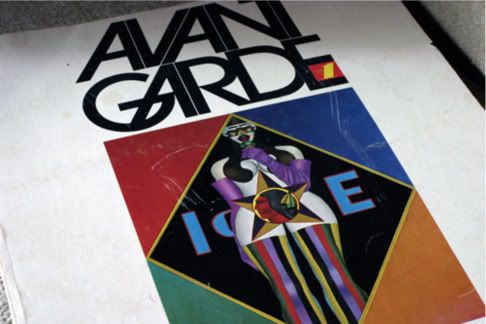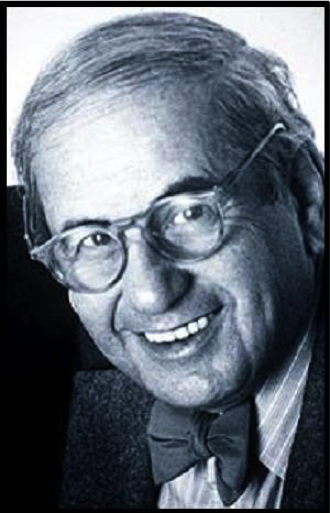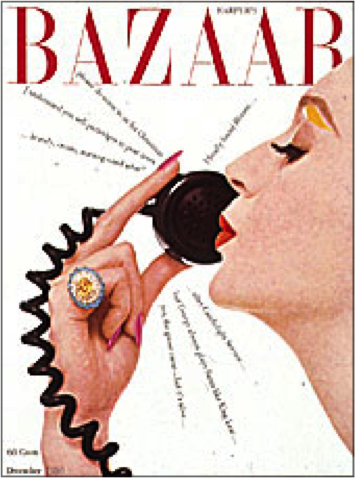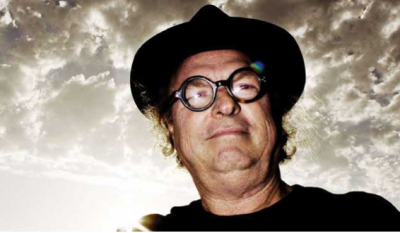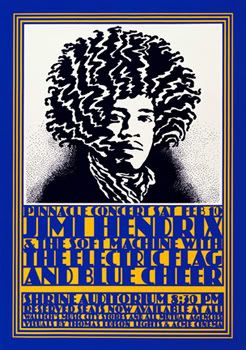Revival Art // What it is
Revival art is an alternative to classical Modernism and is created as vintage graphic approaches that prefigured Post-Modernism in the mid-1950s. As it was once being considered as obsolete, it was removed from a popular culture, primitive painting.
Until fresh sources of inspiration such as Victoriana, Art Nouveau and Art Deco graphic motifs were discovered, paints, images as well as typography were combined together as a total design.
Since Revival Arts are not really suitable for multinational business communications, they are usually used for editorial and book designs, record albums, cultural posters, and packaging.
Labels: Revival
Revival Art // Significant figures
Milton Glaser
Have you ever seen this logo before?
I bet you do!
Guess what?
This famous I love New York logo is designed by Milton Glaser.
He is the president of Push Pin studios, and here's his piece of Revival Art:

Holiday.
Otto Storch
Here's another example of Revival Art by Otto Storch in 1961:
Rings on her fingers.
Otto Storch is known as a magazine art director and advertising photographer who introduced an expressive typographic style to woman's magazine as part of a revolution in editorial design.
In addition, she is also one of the handful graphic designers who helped to transform and modernize the visual content of American magazine.
She also helped in reviving late 19th-century Victorian wood typefaces which had been passed for decades, by adding graphic impact and contrast to the printed page.
Paul Brooks Davis
Paul Davis is an American graphic artist who developed a distinct visual persona which, owing to an unique confluence of primitive and folk arts that brought a fresh new American look to illustration.
Look at one of his illustrations for a particular book jacket:
Plunkitt of Tammany Hall.
A little add-on to his profile,
Davis has worked at Push Pin Studios which focus on revivals of Art Nouveau and Art Deco which are the inspirations for Revival Art.
Labels: Revival
Revival Art // More examples (1973)
David Lance Goines, 1973
He designs his work by both letterpress and photo offset lithography.
Chez Panisse.
Seymour Chwast, 1973
The sensational Houdini poster.
Barry Zaid, 1973
He contributed covers to magazines like Vogue.
The following are drawings published in The Push Pin Graphic:
Mata Hari
Labels: Revival
Eclectism // What it is
In the 1960s, a design consciousness had become ingrained in every commerce-oriented, industrial society. With the proliferation of design schools, greater access to phototechonologies and a big store of graphic design approaches to choose form, no one style dominated. As such, this is the essence of electism - a mix with no particular calling or style.
In short : this means, due to the ever increasing amount of resources and exposure, no one style or trend dominated at that point of time. Thus, the term eclecticism was coined for this period of graphic design produced.
Eclecticism is a kind of mixed style in the fine arts: "the borrowing of a variety of styles from different sources and combining them" (Hume 1998, 5).
Significantly, eclecticism hardly ever constituted a specific style in art: it is characterized by the fact that it was not a particular style.
In general, the term describes the combination in a single work of a variety of influences — mainly of elements from different historical styles in architecture, painting, and the graphic and decorative arts.
For the more easily satisfied : it is basically a mash-up of whatever graphic styles were popular before.
An exmaple of eclectic art is by Herb Lubalin. Avant Garde. Magazine cover, January 1968.
Labels: Eclectic
Eclectism // Significant figures
Henry Wolf
the graphic designer and photographer who, as art director of Esquire, Harper's Bazaar and Show magazines in the 1950's and 60's, held sway over American periodical design
In 1961 he became art director of a progressive new arts magazine, Show, where his covers were noteworthy for their pictorial wit and elegance.
Cover from Show magazine by Henry Wolf, February 1963
Bazaar's cover.
You can see that it still holds some similarities with the current issues of Bazaar in circulation. Labels: Eclectic
Polish // What it is
How did polish posters come about?
Contemporary Polish posters arose after WW2 as a spirited attempt to rebuild the war-torn nation.
These posters are used as a form of communication because no televisions and only a few radios and
newspapers were available. The Polish then instituted a state-supported agency to commission and
publish these posters, which mostly announced cultural events, with only a few of them being political
and educational. Film posters is the first fertile ground in which Polish style flowered.
How did they come up with film posters?
The artists capture the film's essence through visual metaphor as scenes from the films are rarely shown.
Cultural posters then became a significant outlet for individual artistic expression, as artists aim to
establish their own styles and identities.
What made polish posters unique?
Even when it's world view is developed fro western styles like Art Nouveau, Surrealism and Pop art,
Polish posters, which are considered as advertising art, it is something that was not seen in the Western
Commerce, which made the 1950s - 1970s the golden age of Polish Posters. Another unique point about
these posters is the fact that these artists used painting, photography and hand-lettering in combinations
that were never known and often disapproved of. Their expression for design contributed to a creative
malaise in the late 70s. In the early 80s however, the need for exciting visual communications was
reestablished.
Labels: Polish
Polish // Significant figures
Roman Cieslewicz
1981
Liberte Wolnosc, a political poster
Roman Cieslewicz was a graphic artist and photographer. He was also the art director for "Vogue" and "Elle".
Andrzej Pagowski & Krystyna Hofmann
Wojna Swiatow (The war of the Worlds) film poster
Franciszek Starowieyski
1983
Oni (They), theatre poster
Breda, Poster
Franciszek Starwieyski was a leading stylist in Polish Art. His artworks were exquisitely ornamental and he uses unique metaphors in his works. Throughout his career, his style was deviated from the socialist realism that was prevalent during the start of this career and the popular, brightly coloured Cyrk posters.
Mieczysław Górowsk
Krzysztofa Dydo (Collection of Christopher Dydo) Poster
Mieczysław Górowsk started designing posters in 1966 and his oeuvre now numbers over 400 posters
Jan Lenica
1984
Lebensbilder Zeitbilder, poster for Postermuseum in Germany
Jan Lenica artworks combines the surreal with the real. He employs dramatic color contrasts and a flowing linear technique to produce powerful, haunting images.
Andrzej Czeczot
1985
Szewcy (shoemaker) poster for a play by Witkacy
Edward Dwurnik
Teatr Narodowy (National Theater), poster
Punkty za Pochodzenie (Point of Origin), Antiwar poster
Labels: Polish
Psychedelic // What it is
History
Born in San Francisco, psychedelic art was mainly a reflection of the 1960s American Youth culture. Best described by Otto Wagner’s famous term gesamtkunstwerk (meaning the total work of art), psychedelic art connotes the return of the hippie movement.
Psychedelia got pretty mainstream after it was being used by trendsetters in the merchandising business. It was used in newspapers, posters, clothing, jewelry, furniture and auto mobiles. It got so famous, it spreaded throughout America and eventually Europe.
Early psychedelia were literary rather than visual. The latter being quite surrealist-inspired.
What is Psychedelic art? The word psychedelic simply means mind manifesting.
It is a prolific and colurful art form that depicts images mainly influenced by the hallucinogenic effects of psychedelic drugs such as LSD, Mescaline and Psilocybin (Magic mushroom).
Features of Psychedelic art:
- Fantastic, metaphysical and surrealistic subject matter
- Kaleidoscopic, fractal or dizzy patterns
- Bright and highly contrasting colours
- Morphing of objects
- Phosphenes, spirals, concentric circles
- Repetition of motifs
- Innovative typography and hand-lettering
- Warping and transposition of positive and negative spaces
Labels: Psychedelic
Psychedelic // Significant figures
John Van Hamersveld
Known for his works with the music industry, Hamersveld has left his mark in the industry and is highly influential as a psychedelic artist. Here are some of his more famous works:
Jimi Hendrix concert poster
Cream concert poster
Kiss' Hotter Than Hell album cover
Other famous psychedelic artists:
Barney Bubbles
Gilbert Shelton
Warren Dayton
Labels: Psychedelic
Psychedelic // More examples
Japonism // Introduction
Japonism refers to the influence of the art of Japan. It was influenced by the European avant-garde, a concurrent Modernist movement began in Tokyo around 1910.
After nearly 20 years, Japonism made a comeback and shifted the influence to America.
It became even more apparent at the Osaka World Exposition at 1970 where lots of foreign visitors got the Japanese designers to reexamine their cultural roots and to apply to their architecture, arts & crafts, and graphic design.
It is a style that took on Western images from Pop Art, comic strips and television, and emerged them with high-tech Japanese society.
Japanese graphic styles is recognisable not only by its typography or the occasional japanese visual reference. It also employs the full range of photographic and computer communication-arts tools to transform a two-dimensional surface of a poster. 3D surfaces may produce either elegant harmonies or discordant colours, random shapes and explosive images.
Labels: Japanese
Japonism // Significant figures
Shigeo Fukuda
Poster for an exhibition of the designer’s work , 1984
Poster for a private exhibition , 1986
One-man exhibition , 1986
Shigeo Fukuda was a sculptor, graphic artist and poster designer who created optical illusions. His art pieces usually portray deception. The first Japanese designer to be inducted into the New York Art Directors Club Hall of Fame, his work is recognizable for its simplicity and use of visual illusions.
Noh. Performance poster
Asian Performing Arts Institute, UCLA, Theater poster
Ikko Tanaka was a well-known Japanese graphic designer. The characteristic of his designs is a mixture of Japanese traditions with western modernism to produce contemporary visual expression. He rose to prominence in the graphics industry in Japan with designs that synthesized Japanese pictorial traditions with popular Western styles of typography and layout. His work symbolised the energy of Japanese graphics communications. He designed posters, corporate logos, book and magazine layouts and exhibition displays, for example the Japanese Government’s History Pavilion displays at Expo ’70, Osaka, and the Oceanic Cultural Museum displays at Ocean Expo ’75, Okinawa. He was also known for his crisp, abstract imagery, meticulous sense of colour and elimination of all inconsequential detail.
Tadanori Yokoo
The Wonders of Life on Earth, poster, 1965
John Silver, Theater poster, 1967
Science Fiction Movies, Film festival poster, 1975
Born 27 June 1936, he is a Japanese graphic designer, illustrator, printmaker and painter who has retired in 1981. He is one of Japan's most successful and recognized designer who was influenced by film maker Akira Kurosawa and writer Yukio Mishima. His complex and multi-layered imagery is entirely original.
By the late 60s he had already achieved international recognition for his work and was included in the 1968 "Word & Image" exhibition at the Museum of Modern Art in New York. He took up painting after he retired and his career continues to this day with numerous exhibitions of his paintings every year.
Labels: Japanese
Japonism // More examples
Takashi Nomura, Seitaro Kuroda, 1982
Mosquito on the 10th floor, film poster
Kazumasa Nagai, 1982
Zero Nuclear weapons poster for Hiroshima-Nagasaki publishing committee
Yusake Kamekura, 1983
Hiroshima Appeals poster
Kazumasa Nagai, 1984
Poster for Japanese graphic art exhibition in Paris
Kenji Itoh, 1986
Package design for tea
Shigeo Okamoto, 1986
Life and Pottery poster for the 21st pottery test and research center exhibition
Labels: Japanese








